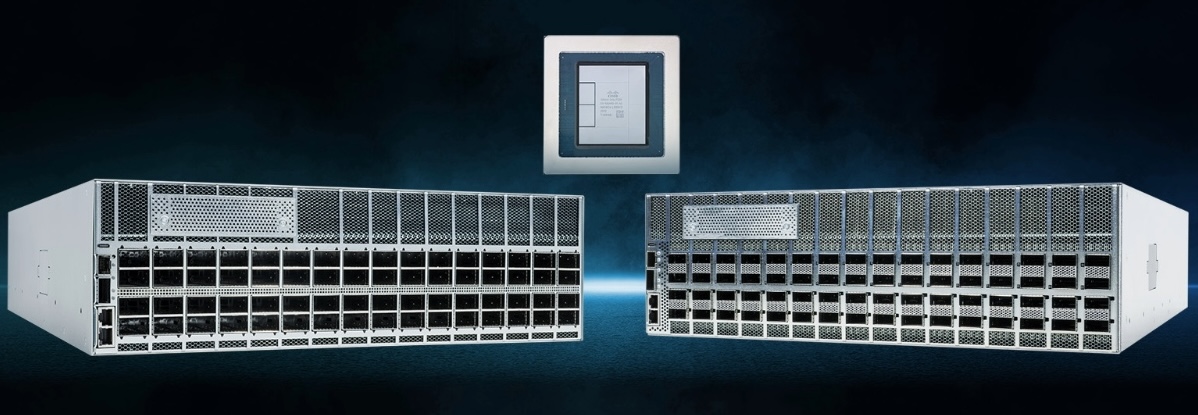When discussing AI, people typically focus on GPUs, servers, and storage. Now, though, many organizations are shifting their focus to efficiently moving data from edge locations and enhancing data center connections through faster networking.
Broadcom recently announced its 800GE Thor Ultra Ethernet NIC. They also announced the Tomahawk 6-Davisson CPO Ethernet switch, which is touted to deliver 102.4Tb/s to address the increase in data traffic driven by AI activity.
Now, Cisco has introduced the Cisco 8223, a high-performance router built for modern data center connections. It is designed to handle the power limits, space constraints, and unpredictable traffic that come with AI workloads.

The 3RU 8223 is the only fixed 51.2 Tbps router made specifically for heavy AI traffic between sites. It combines dense 800GE, deep buffers, and strong security with the new Cisco Silicon One P200 chip. This compact platform is designed to eliminate backbone bottlenecks as organizations expand across multiple locations rather than growing within a single facility.
Cisco also introduced the P200 chip, the latest addition to its Silicon One lineup and the core of the 8223. These new technologies help organizations eliminate bottlenecks and get their infrastructure ready for AI-driven growth.
AI compute demand is surpassing the capacity of even the largest data centers. Martin Lund, EVP of Cisco’s Common Hardware Group, emphasizes that long-distance interconnectivity has become a critical requirement rather than a supplementary feature. He noted that, in real-world applications, inadequate DCI links can cause job delays, stranded capacity, and increased energy consumption. Lund also mentioned that the 8223 addresses these issues with 64 800GE ports, capable of processing over 20 billion packets per second, and supports 800GE coherent optics to extend metro and regional connectivity up to 1000 km. He added that the P200’s deep buffering is designed specifically for AI training microbursts, helping level out traffic spikes, protect tail latency, and sustain throughput under high stress.
The platform is not just about high capacity; it also aims for efficiency and flexibility. Cisco highlights that the system uses power like a switch, which is helpful for facilities with limited power. Its 3RU size means more ports per rack, making it easier to plan for growing bandwidth needs. The P200 chip adds programmability, so operators can update protocols and features via software, keeping up with rapidly evolving AI tools without requiring new hardware.
Data centers worldwide are facing power and space constraints as AI workloads grow. Large operators can no longer simply add more capacity to a single system or connect more systems within a single data center. Now, it’s crucial to connect multiple sites and distribute AI tasks effectively. Without better links between sites, performance can suffer, and resources may be wasted. The Cisco 8223 offers the flexibility and programmability required for these networks, with deep buffering to keep critical workloads secure and reliable across locations.
Security is essential for AI data as it moves between locations. The 8223 offers fast encryption with algorithms designed to withstand future quantum threats, built-in protections, and strong integration with Cisco’s monitoring tools for detailed tracking and quick problem-solving. For teams working with sensitive or regulated data, this level of security is a must.
Flexible deployment is a primary goal. The 8223 will initially support open-source SONiC, with IOS XR to follow. The P200 chip will also be used in modular and disaggregated systems, and Cisco plans to add P200-based products to the Nexus line with NX-OS. This consistency enables operators to manage and monitor multiple systems more easily, simplifying setup and maintenance.
Cisco Silicon One delivers a complete portfolio of networking devices for AI, hyperscaler, data center, enterprise, and service provider use cases. Introduced in 2019, Cisco Silicon One is playing a critical role in major networks worldwide.




 Amazon
Amazon